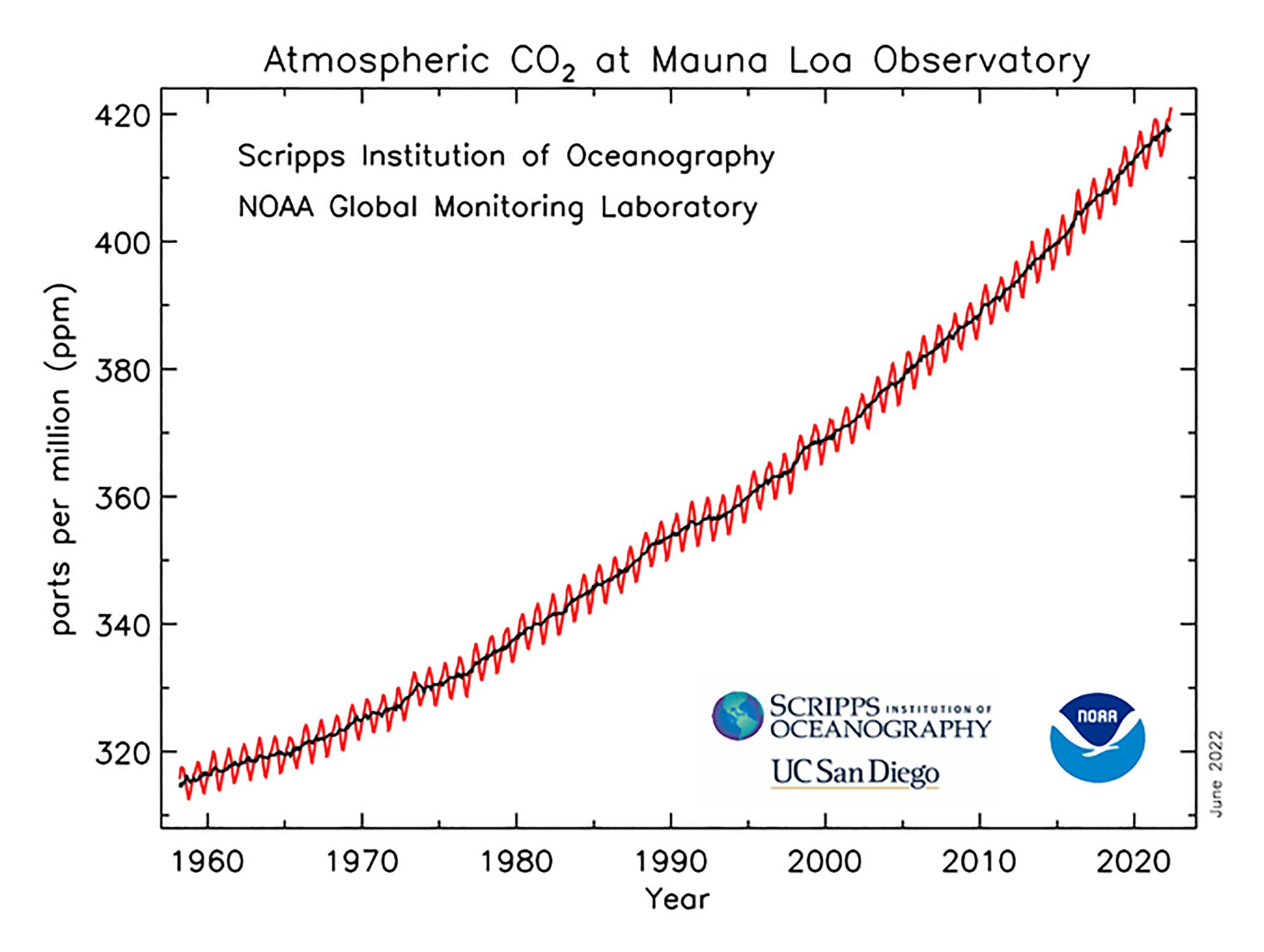Latest Carbon Dioxide Reading Falls in Line with Past Data

Carbon dioxide measured at NOAA’s Mauna Loa Atmospheric Baseline Observatory peaked for 2022 at 421 parts per million in May, pushing the atmosphere further into territory not seen for millions of years. Scientists at Scripps Institution of Oceanography, which maintains an independent record, calculated a similar monthly average of 420.78 ppm.
CO2 levels are now comparable to the Pliocene Climatic Optimum, between 4.1 and 4.5 million years ago, when they were close to, or above 400 ppm. During that time, sea levels were between 5 and 25 meters higher than today, high enough to drown many of the world’s largest modern cities. Temperatures then averaged 7 degrees Fahrenheit higher than in pre-industrial times, and studies indicate that large forests occupied today’s Arctic tundra.
Will global warming render the Earth uninhabitable? No. But a hotter Earth will be one in which most of the world’s great cities, that humankind has assembled over the last few thousands of years, will be under water. Droughts, floods, and wildfires will conspire to make life on this planet very unpleasant.
Other than a miracle that comes our way via one or more technological breakthroughs, we can only hope that the nations of the world come together to reduce emissions and improve land management.
Though this is not impossible, it’s certainly unprecedented, and, given the news of the day, .e.g., mass shootings, war, the pandemic, and the attempt to overthrow American democracy, we seem to have more acute problems to solve.
